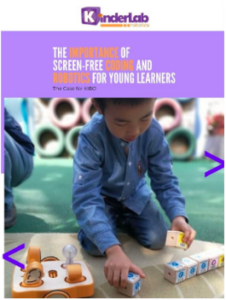Penn State: ‘Making and Education’ Course and Maker Faire Promote Experimenting, Exploring
In this article, the author describes a maker course and maker faire that covers topics from physical/digital tools and high- and low-tech maker activities to online learning, content creation and participatory culture. KIBO is included in the Maker course.
The article reads in part:
“They learn not only educational theory, but how people learn in and out of schools, in informal and interest-driven settings, and how to effectively support, scaffold and design for meaningful and inclusive learning,” said Richard, the course creator.
Traditionally, maker learning opportunities were designed specifically for out-of-school settings, like camps or after-school programs, according to Richard. “The course gets students to think really deeply about the different aspects of learning and how different tools, systems or activities can be designed or harnessed to inform learning, help learners make important interdisciplinary connections, such as between STEM and the arts, or become critical consumers or creators.”
“When I found this making and learning course, I was very excited because [it covered things like] KIBO, which is actually developed for younger learners who can still learn about computational thinking and learn coding and algorithms, which is really important for computational thinking. So … I got inspired.”
“We’re just creating spaces for students to explore their own creativity and explore different elements of culture and technology in ways that they might not have been familiar with prior. Helping students understand that whatever is available to them, they can use to the fullest and in different ways.”
“This encourages students to be purposeful in the design of meaningful exploratory learning activities that consider a variety of entry points. This is a Maker Faire, so we’re really thinking about how we can harness some of the potential for deeper engagement or discovering interests and connections through messing around, experimenting and exploring.”
Read the full article.



















